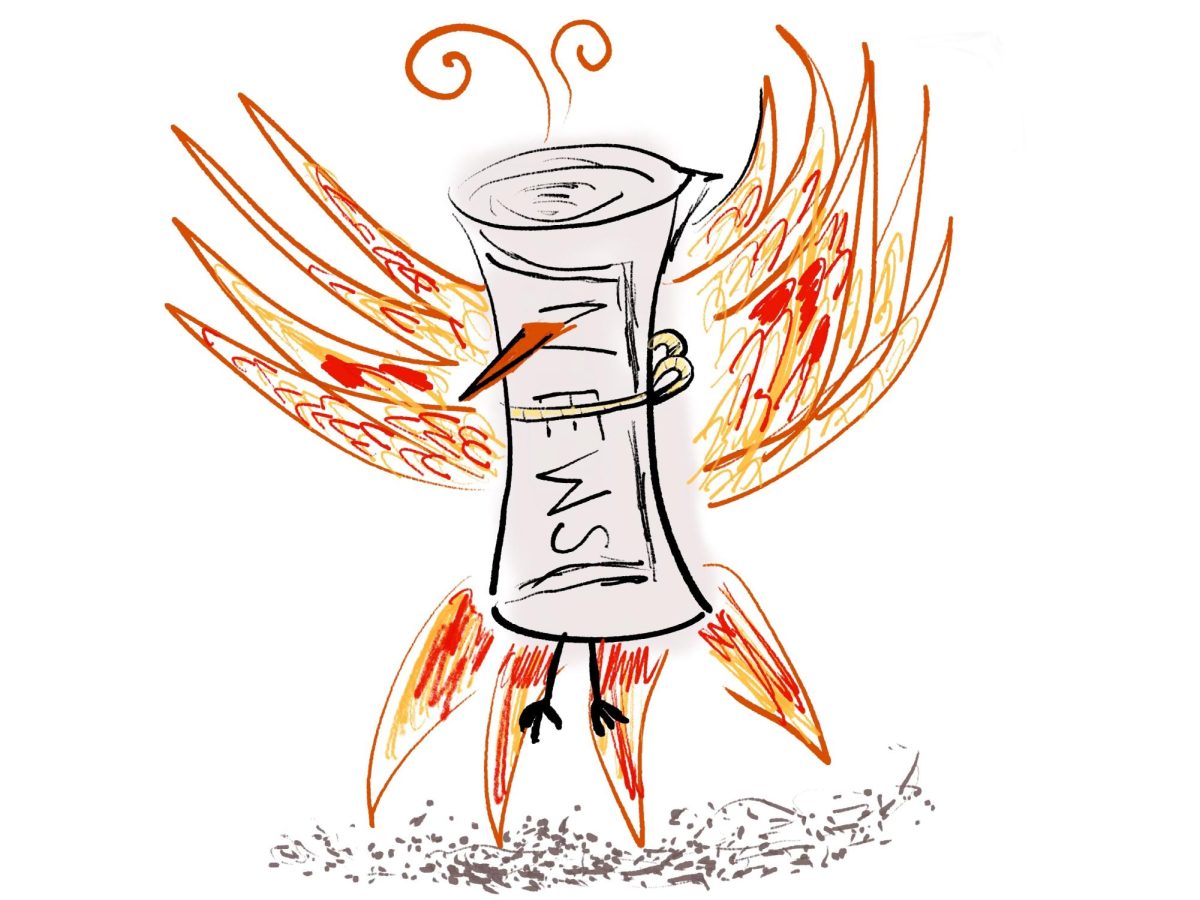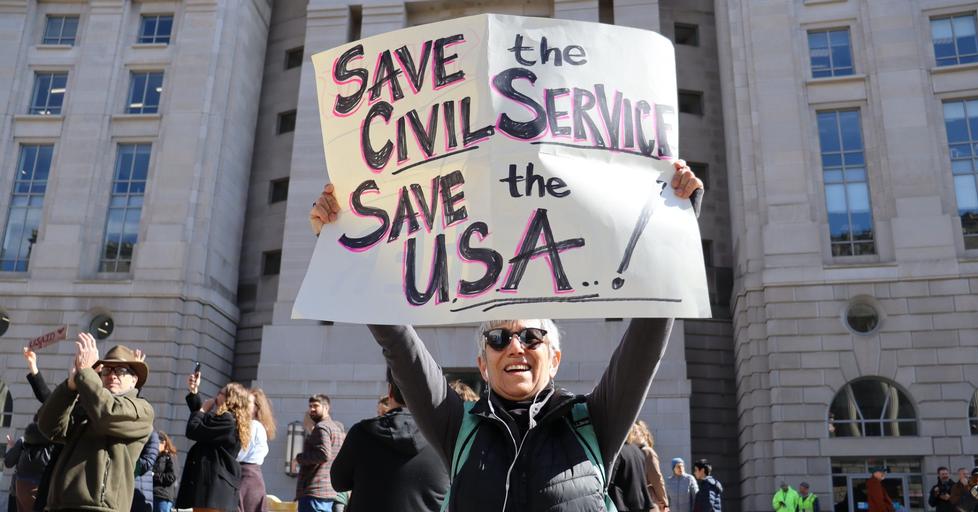Tourists and local citizens roamed around in London’s National Gallery, behind the cream-colored columns and spewing teal water fountains. This specific room on the second floor, Room 43, featured Dutch Post-Impressionist painter Vincent Van Gogh’s art. Students on field trips snapped pictures of his 1889 Self-Portrait, his 1890 Girl in White.
“Hey!” Security guards raced towards Van Gogh’s Sunflowers painting, where two people stood within the railings, hands dripping with red. They wore matching, baggy white T-shirts with “Just Stop Oil” printed in bold, black letters. Behind them, no sunflowers could be seen on Van Gogh’s painting anymore — the frame now featured a repulsing blotch of tomato soup, which was slowly dripping into the cracks and crevices of the oil painting.
The two protestors proceeded to glue their hands to the walls and yell, “What is worth more? Art or life?” before being dragged away by the security guards. They were later arrested.
A BBC article published on October 14, 2022, right after this incident took place, said the gallery considered Sunflowers as “among Van Gogh’s most iconic and loved works.” This is not the first time artwork has been attacked for the sake of climate change.
This trend of attacking historical art as a form of protest has also expanded from the cause of climate change and similar protests are stirring up for different causes, none of which seem to bear a clear connection to the artwork being destroyed.
Most recently, in March of 2024, two climate change protesters, Donald Zepeda and Jackson Green vandalized the U.S. Constitution display at the National Archives. According to CNN, they were “charged with felony destruction of government property” and pleaded not guilty. The U.S. Constitution is an extremely important document to American history and has absolutely no connection to the cause of climate change. If this behavior expands, it will set a negative precedent and example for other causes.
Such violent protests against art are disrespectful and disruptive to both the artwork and bystanders in the area. “The media is not shining a positive light on their actions,” artist and environmental enthusiast Annika Mody (‘27) noted. “When it gets stereotyped as a new era of peaceful protesting where people are just being harmful and disruptive, it also shines a negative light on younger protesters in general.”
First off, these attacks are repetitive and destructive. According to The Guardian, there were thirty-eight attacks on artwork by climate activists in 2022 alone. In addition to the tomato soup assault on Van Gogh’s Sunflowers, Claude Monet’s Haystacks painting was attacked by members of the “Last Generation” organization in Potsdam, Germany, who threw mashed potatoes on the painting.
Art Teacher Ms. Elisabeth Wepsic, who has protested before for Act Up, an organization protesting for AIDS awareness, remarked, “I mean, what did Monet ever do except be a total naturalist? He was the most environmentally conscious artist out there. If he’s one of the artists to be attacked, that’s not a good reference.”
In Italy, members from the same organization glued their palms to the glass protecting Sandro Botticelli’s Primavera in Florence’s Uffizi Gallery. They then unfurled a banner that said “Ultima Generazione No Gas No Carbone” (Last Generation, No Gas, No Coal) before they were taken away by security. “Just Stop Oil” members did the same thing in London, gluing themselves to the 500-year-old painting, Giampietrino’s The Last Supper (1502) in the Royal Academy. By that point, the next pumpkin soup assault on Leonardo Da Vinci’s Mona Lisa in France was not eye-catching — just annoying.
Those were just some of the 2022 attacks climate protesters made on art for the sake of their cause. Yet, here we are in 2024: climate activists are still protesting, but our world’s oil consumption and global warming are not going backwards in any way. According to a report by the International Energy Agency (IEA), an autonomous intergovernmental organization, “demand for jet fuel and kerosene grew by more than 1 mb/d in both years and contributed almost half of the increase in global oil demand.” Even if the protests started a few years ago, oil use has still “increased by an estimated 1.6 mb/d year-on-year in the first quarter of 2024.” While the topic is important, the way that climate change protesters are going about it is ineffective to their cause.
It’s not only ineffective, it’s disrespectful to artists. Just Stop Oil protesters proclaimed, “What is worth more? Art or life?” in regards to Sunflowers — but were these paintings not a product of Van Gogh’s life? Artists like Van Gogh, Monet, or Da Vinci lived through their paintings. They live on through their work.
These protests are anything but peaceful. “It is an act of violence — toward the person, toward the subject, and toward the object. It is a violent protest,” Ms. Wepsic insisted. “If I were to be asked to be part of something like that, I wouldn’t do it. The original painting is important for history.”
“They’re totally bulldozing into something that’s valuable to other people. There’s a totally separate community that values the arts — it’s historic and it means different things to different people,” Annika added. “They’re discrediting that in the same way that people are discrediting what they’re doing to the Earth. They’re not really practicing what they’re preaching.”
Vincent Van Gogh’s “paintings revolutionized artistic practice and styles,” according to the Vincent Van Gogh website. During his time, abstract art like his infamous Starry Night were unheard of. “The intensity of his vision, his wonderful sense of color, and the extraordinary boldness of his technique created masterpieces that exercise a profound influence on the art of the twentieth century,” the website says. And he isn’t the only historically important artist — all of these artists are also extremely important to global art history. While modern issues are still prevalent, the destruction of important artifacts in human history is still detrimental and humiliating to the art piece. You wouldn’t throw soup cans on Van Gogh himself, and throwing soup cans at his work delivers a similar message.
Many people seeing such disruptions in the news don’t seem to understand the connection between the climate change protesters’ choices to attack art and their cause for climate change. “I just don’t think it’s relevant to the situation. [Van Gogh] was extremely poor and ostracized in his community for his mental health. He’s not the poster child of societal norms,” Annika explained. “If you’re trying to protest the oil industry, maybe you should actually do something at least a little bit related, and not something completely random that you think will draw attention.”
Such protests are actually harming the cause of climate change. These outbursts of violence only paint climate change protests as a ridiculous or outlandish movement in the media. While “Just Stop Oil,” among other organizations have done forms of peaceful protests like blocking roads and going on hunger strikes, which draw the right kind of attention, such attacks on art only discredit the good work that they are doing for their cause. And quite frankly, it’s getting tiring.
“I mean, I looked at a couple videos and to me it was somewhat humorous. Like, mashed potatoes?” Ms. Wepsic said, chuckling. Annika added, “What they’re trying to do is gain more support and attention, but it’s kinda doing the opposite. It’s just making people more angry because it’s not doing much. They’re getting annoyed.”
These organizations have participated in other effective forms of protest before. Members of “Just Stop Oil” have blocked roads in the United Kingdom, members of Germany’s “Lost Generation” have glued themselves to Germany’s busiest motorways and even gone on hunger strikes to promote their cause. Protests on roads, motorways, and more are relevant to their cause for the conservation of oil. And while road protests inconvenience many people on the road, at least it makes the right kind of statement. But, because of the disruptions in art museums, people don’t seem to credit such efforts from other members of these organizations.
“They’re very passionate, but if that could be guided in a way that would benefit their cause, then the media could shine a positive light on it,” Annika said. “There are so many people doing actually good work that are being pushed down in the media due to the amount of ridiculous, outlandish things happening that tend to make headlines quicker.”
Climate change is an urgent topic that our world needs to address and work to counter. There’s no doubt about that. But while effective strategies such as picketing, blocking roads, or other forms of relevant, non-destructive protests are led by climate change organizations, other disruptive attacks on artwork for the sake of a seemingly unrelated cause is not only disrespectful to the artist and their work, but also damaging to the preservation of history and the cause itself. Attacks on artwork as a form of climate change protest needs to stop.









